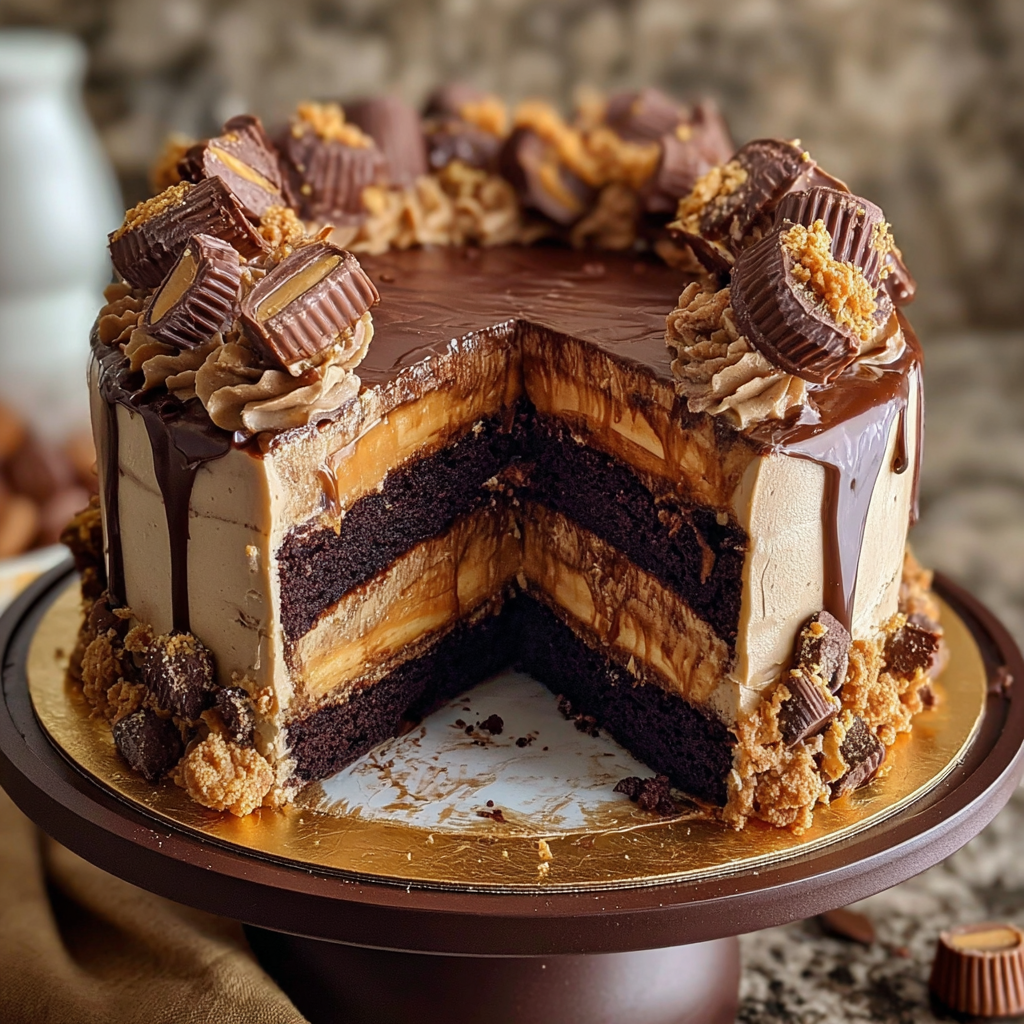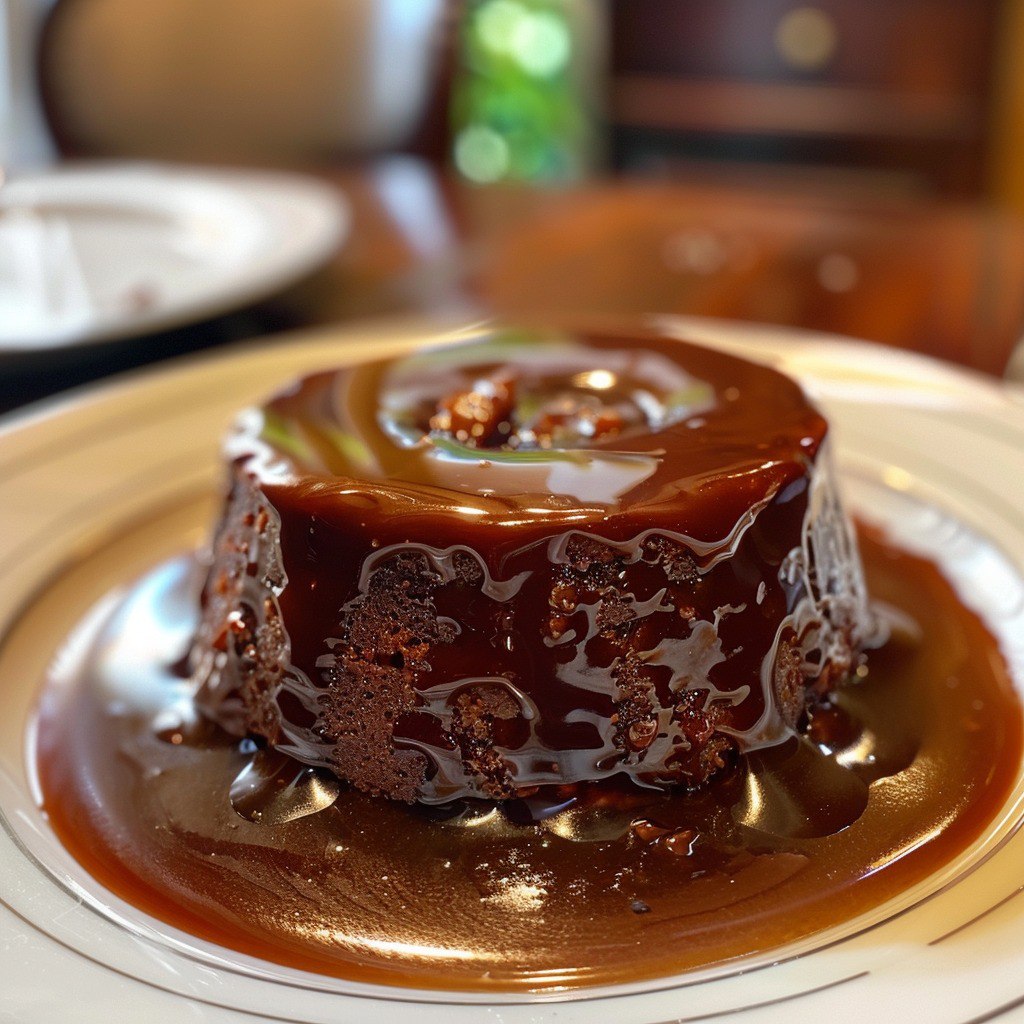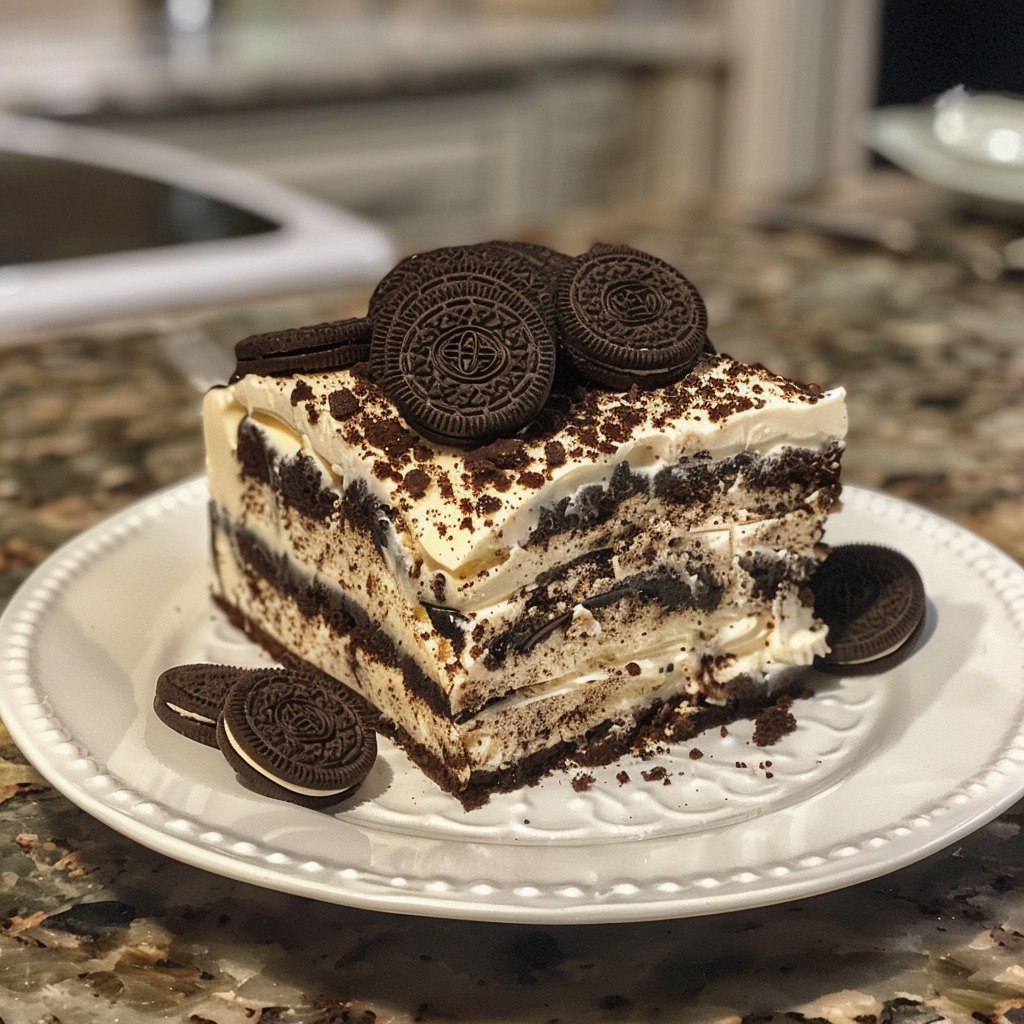Restaurant-quality Chinese food at home has never been more achievable. Moreover, one dish stands out as the perfect introduction to authentic stir-fry cooking: Chinese pepper steak. This beloved recipe combines tender beef strips with vibrant bell peppers in a savory sauce that rivals your favorite takeout spot. Furthermore, mastering this classic dish opens doors to countless stir-fry variations.
Additionally, Chinese pepper steak represents the essence of Cantonese-American cuisine, balancing sweet, salty, and umami flavors perfectly. The dish showcases proper wok hei technique while remaining accessible to home cooks. Plus, it delivers restaurant-quality results in under 30 minutes from start to finish.
Print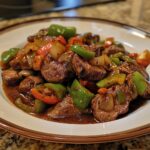
The Complete Guide to Chinese Pepper Steak: A Classic Stir-Fry Masterpiece
- Total Time: 30 mins
- Yield: 4 servings 1x
Description
Chinese Pepper Steak is a quick and savory stir-fry featuring tender beef strips, colorful bell peppers, onions, and a rich sauce. Perfect served hot over steamed white rice for an easy and flavorful meal!
Ingredients
- 1 lb flank steak, thinly sliced against the grain
- 2 tbsp soy sauce
- 1 tbsp oyster sauce
- 1 tbsp hoisin sauce
- 1 tbsp cornstarch
- 1 tsp sesame oil
- 2 tbsp vegetable oil, divided
- 1 onion, thinly sliced
- 1 green bell pepper, thinly sliced
- 1 red bell pepper, thinly sliced
- 3 cloves garlic, minced
- 1-inch piece ginger, minced
- 1/2 cup beef broth or water
- Salt and pepper, to taste
- Cooked white rice, for serving
- Green onions, chopped (for garnish)
Instructions
- In a bowl, mix soy sauce, oyster sauce, hoisin sauce, cornstarch, and sesame oil. Add sliced flank steak and toss to coat. Marinate for 15-30 minutes.
- Heat 1 tbsp of vegetable oil in a large skillet or wok over high heat.
- Add marinated beef in a single layer and cook undisturbed for 1-2 minutes to sear. Stir-fry for an additional 1-2 minutes until browned. Remove beef and set aside.
- In the same skillet, add remaining vegetable oil. Add onion, bell peppers, garlic, and ginger. Stir-fry for 2-3 minutes until vegetables are tender-crisp.
- Return cooked beef to the skillet. Pour in beef broth or water and stir to combine. Season with salt and pepper.
- Cook for another 2-3 minutes until sauce thickens and coats everything.
- Serve hot over steamed rice and garnish with chopped green onions.
Notes
- Slice beef thinly against the grain for extra tenderness.
- Adjust spice level by adding crushed red pepper flakes or fresh chili.
- Great with jasmine rice, brown rice, or noodles.
- Prep Time: 20 mins
- Cook Time: 10 mins
- Category: Main Dish
- Method: Stir-fry
- Cuisine: Chinese
Nutrition
- Serving Size: 1 portion (without rice)
- Calories: 300 kcal
- Sugar: 5 g
- Sodium: 600 mg
- Fat: 16 g
- Saturated Fat: 4 g
- Unsaturated Fat: 9 g
- Trans Fat: 0 g
- Carbohydrates: 14 g
- Fiber: 2 g
- Protein: 25 g
- Cholesterol: 60 mg
Keywords: pepper steak, Chinese beef stir fry, quick dinner, Asian recipe, beef and peppers
Why You’ll Love This Chinese Pepper Steak Recipe
This time-tested recipe has earned its place in countless home kitchens worldwide. Moreover, it combines authentic flavors with practical cooking techniques that guarantee success. Here’s why Chinese pepper steak deserves a permanent spot in your weekly meal rotation:
It’s incredibly quick to prepare: Perfect for busy weeknights when you need dinner fast. Additionally, the active cooking time is only 10 minutes once ingredients are prepped.
It’s budget-friendly: Uses affordable cuts of beef that become tender through proper technique. Furthermore, the recipe stretches protein with plenty of vegetables, making it economical for families.
It’s nutritionally balanced: Provides lean protein, vitamins from colorful peppers, and complex carbohydrates from rice. Moreover, the cooking method preserves nutrients while maximizing flavor.
It’s highly customizable: You can adjust vegetables, spice levels, and sauce components to suit preferences. Additionally, the basic technique works with different proteins and seasonal produce.
It’s authentic yet approachable: Delivers genuine Chinese-American flavors without requiring specialty equipment. Plus, most ingredients are available at standard grocery stores.
Essential Ingredients for Perfect Chinese Pepper Steak
Creating exceptional Chinese pepper steak begins with understanding each ingredient’s role. Moreover, quality components and proper preparation techniques separate good stir-fry from great stir-fry.
Selecting the Right Cut of Beef
Flank steak is the traditional choice for Chinese pepper steak due to its grain structure and flavor. Moreover, this cut becomes incredibly tender when sliced against the grain and marinated properly. Furthermore, flank steak’s natural beefy flavor complements the savory sauce without being overpowering.
Additionally, the meat’s texture holds up well to high-heat cooking, developing a beautiful sear while remaining juicy inside. Alternative cuts like sirloin or ribeye work well, though they may require adjusted cooking times. Plus, flank steak is typically more affordable than premium cuts while delivering superior results.
The Power of Proper Marinade
The marinade serves multiple purposes beyond flavor enhancement. Moreover, soy sauce provides saltiness and umami depth, while oyster sauce adds sweetness and complexity. Furthermore, hoisin sauce contributes molasses-like richness that balances the overall flavor profile.
Additionally, cornstarch in the marinade creates a protective coating that helps retain moisture during cooking. The technique, called “velveting,” ensures tender meat even with high-heat cooking. Plus, sesame oil adds aromatic nuttiness that’s essential to authentic Chinese flavors.
Bell Pepper Selection and Preparation
Colorful bell peppers provide visual appeal, crunch, and nutritional value. Moreover, using both red and green peppers creates attractive contrast while offering different flavor profiles. Red peppers tend to be sweeter, while green peppers provide slight bitterness that balances the dish.
Additionally, proper slicing technique ensures even cooking and optimal texture. Cut peppers into uniform strips about ¼-inch wide for consistent results. Furthermore, removing seeds and white pith prevents bitterness and improves overall eating experience.
Aromatics: Garlic and Ginger
Fresh garlic and ginger form the aromatic foundation of authentic Chinese cooking. Moreover, these ingredients should be minced finely to distribute flavor evenly throughout the dish. Furthermore, fresh aromatics provide brightness that dried versions cannot match.
Additionally, the combination of garlic and ginger creates the characteristic base flavor of Chinese stir-fries. These ingredients release their essential oils when heated, infusing the entire dish with authentic taste. Plus, both ingredients offer health benefits including anti-inflammatory properties.
Step-by-Step Guide to Making Chinese Pepper Steak
Mastering Chinese pepper steak requires understanding proper stir-fry technique and timing. Moreover, success depends on preparation, high heat, and quick execution once cooking begins.
Step 1: Marinating and Preparation
Begin by slicing the flank steak against the grain into strips approximately ¼-inch thick. Moreover, cutting against the grain breaks down tough muscle fibers, ensuring tender results. Furthermore, uniform thickness promotes even cooking and professional appearance.
Additionally, combine soy sauce, oyster sauce, hoisin sauce, cornstarch, and sesame oil in a bowl. Whisk until smooth and well-combined. Moreover, this marinade should coat the beef evenly without being too thick or thin.
Toss the sliced beef with the marinade until every piece is well-coated. Furthermore, allow the meat to marinate for 15-30 minutes at room temperature. This timing allows flavors to penetrate while preventing over-marination that can make meat mushy.
Step 2: High-Heat Cooking Technique
Heat your wok or large skillet over high heat until smoking hot. Moreover, proper temperature is crucial for achieving the characteristic “wok hei” flavor that defines great stir-fry. Furthermore, the pan must be hot enough to sear the meat immediately upon contact.
Additionally, add one tablespoon of vegetable oil and swirl to coat the pan. The oil should shimmer and move freely when the pan is properly heated. Moreover, using oil with a high smoke point prevents burning and off-flavors.
Add the marinated beef in a single layer, avoiding overcrowding. Furthermore, allow the meat to sear undisturbed for 1-2 minutes to develop proper browning. This creates flavor complexity and appealing color contrast.
Step 3: Vegetable Integration and Sauce Development
Remove the seared beef and set aside while cooking vegetables. Moreover, this prevents overcooking the meat while ensuring vegetables achieve proper texture. Furthermore, the beef will finish cooking when returned to the pan.
Additionally, add the remaining oil to the same pan and heat briefly. Add onions first, as they require longer cooking time than peppers. Moreover, stir-fry for about one minute until they begin to soften.
Add bell peppers, garlic, and ginger to the pan. Furthermore, stir-fry for 2-3 minutes until vegetables are crisp-tender. The peppers should retain some crunch while being heated through. Plus, aromatics should be fragrant but not browned.
Step 4: Final Assembly and Sauce Reduction
Return the cooked beef to the pan with the vegetables. Moreover, toss everything together to distribute ingredients evenly. Furthermore, add beef broth or water to create steam and help meld flavors.
Additionally, season with salt and pepper to taste, remembering that the marinade already contains sodium. Stir-fry for another 2-3 minutes until the sauce thickens and coats everything evenly. Moreover, the cornstarch from the marinade will help create a glossy finish.
Finally, remove from heat immediately to prevent overcooking. Furthermore, the residual heat will continue cooking the ingredients slightly. Serve immediately over steamed white rice for authentic presentation.
Advanced Techniques for Perfect Chinese Pepper Steak
Elevating your Chinese pepper steak from good to exceptional requires understanding professional techniques. Moreover, these methods ensure consistent results and restaurant-quality flavors.
Mastering Wok Hei Flavor
Wok hei, literally “breath of the wok,” refers to the distinctive smoky flavor achieved through high-heat cooking. Moreover, this characteristic taste cannot be replicated at low temperatures. Furthermore, achieving wok hei requires proper equipment, technique, and timing.
Additionally, ensure your cooking surface is extremely hot before adding ingredients. The oil should smoke lightly, and ingredients should sizzle vigorously upon contact. Moreover, work quickly to prevent burning while maintaining high heat throughout cooking.
Furthermore, avoid stirring too frequently, which prevents proper searing and browning. Let ingredients develop color before moving them. Plus, cooking in small batches prevents temperature drops that inhibit proper browning.
Velveting Technique for Tender Meat
Velveting is a traditional Chinese technique that ensures incredibly tender meat. Moreover, the cornstarch coating creates a protective barrier that seals in juices. Furthermore, this method works with any protein and various cooking methods.
Additionally, the marinade’s cornstarch content should be balanced to create coating without being gummy. Too much cornstarch creates thick, unpleasant coating. Moreover, the consistency should be similar to thin cream when properly mixed.
Furthermore, proper velveting timing prevents over-marination that can make meat mushy. Fifteen to thirty minutes provides optimal flavor penetration. Plus, longer marination times can break down proteins excessively.
Sauce Balance and Consistency
Achieving perfect sauce consistency requires understanding how cornstarch thickens liquids. Moreover, the starch must be properly distributed to prevent lumps. Furthermore, the sauce should coat ingredients without being too thick or thin.
Additionally, taste and adjust seasonings throughout cooking. The sauce should balance salty, sweet, and umami flavors harmoniously. Moreover, remember that reduction concentrates flavors, so season gradually.
Furthermore, add liquid gradually to achieve desired consistency. Too much liquid creates thin, watery sauce. Plus, the sauce should cling to ingredients without pooling in the pan.
Nutritional Benefits of Chinese Pepper Steak
Beyond its delicious taste, Chinese pepper steak offers significant nutritional advantages. Moreover, the dish provides balanced macronutrients and essential vitamins in a satisfying meal.
High-Quality Protein Content
Flank steak provides complete protein with all essential amino acids. Moreover, a typical serving contains approximately 25-30 grams of high-quality protein. Furthermore, this protein content supports muscle maintenance and development.
Additionally, the cooking method preserves protein quality while enhancing digestibility. The marinade’s enzymes help break down proteins slightly, making them easier to digest. Plus, proper cooking temperature prevents protein denaturation that can reduce nutritional value.
Vitamin and Mineral Density
Bell peppers are excellent sources of vitamin C, providing more than citrus fruits. Moreover, red peppers contain higher vitamin C levels than green varieties. Furthermore, these vitamins support immune function and collagen production.
Additionally, peppers provide vitamin A, potassium, and folate. The various colors offer different antioxidant profiles. Moreover, the quick cooking method preserves heat-sensitive vitamins better than prolonged cooking.
Balanced Macronutrient Profile
Chinese pepper steak provides balanced macronutrients when served with rice. Moreover, the combination offers complete proteins, complex carbohydrates, and healthy fats. Furthermore, the vegetable content adds fiber and micronutrients.
Additionally, the dish is relatively low in calories while being highly satiating. The protein and fiber content promotes feelings of fullness. Plus, the balanced nutrition supports sustained energy levels.
Common Mistakes to Avoid with Chinese Pepper Steak
Even experienced cooks can make errors that impact the final result. Moreover, understanding these common pitfalls helps ensure consistent success with Chinese pepper steak.
Temperature Control Issues
Using insufficient heat is the most common mistake in stir-fry cooking. Moreover, medium or low heat prevents proper searing and browning. Furthermore, low temperatures create steamed rather than stir-fried results.
Additionally, overcrowding the pan reduces temperature and prevents browning. Cook in batches if necessary to maintain proper heat levels. Moreover, allow the pan to reheat between batches for consistent results.
Furthermore, adding cold ingredients to hot pans can cause temperature drops. Bring marinated meat to room temperature before cooking. Plus, have all ingredients prepared and ready before starting to cook.
Overcooking Problems
Overcooking beef creates tough, chewy texture that ruins the dish. Moreover, flank steak becomes increasingly tough with extended cooking. Furthermore, the meat continues cooking from residual heat after removal from heat.
Additionally, overcooking vegetables eliminates their crisp texture and vibrant colors. Bell peppers should retain some crunch and bright color. Moreover, properly cooked vegetables provide textural contrast to tender meat.
Furthermore, leaving the dish on heat too long after completion can overcook everything. Remove from heat immediately when sauce reaches proper consistency. Plus, serve immediately to prevent continued cooking.
Seasoning and Sauce Errors
Over-salting is common because multiple marinade ingredients contain sodium. Moreover, taste before adding additional salt, as the marinade provides significant saltiness. Furthermore, reduction concentrates salt content during cooking.
Additionally, using too much cornstarch creates gummy, thick sauce. The coating should be light and glossy, not heavy or starchy. Moreover, proper distribution prevents lumps and ensures smooth consistency.
Furthermore, ignoring sauce balance creates one-dimensional flavors. The final dish should balance salty, sweet, and umami elements. Plus, adjust seasonings gradually throughout cooking for optimal results.
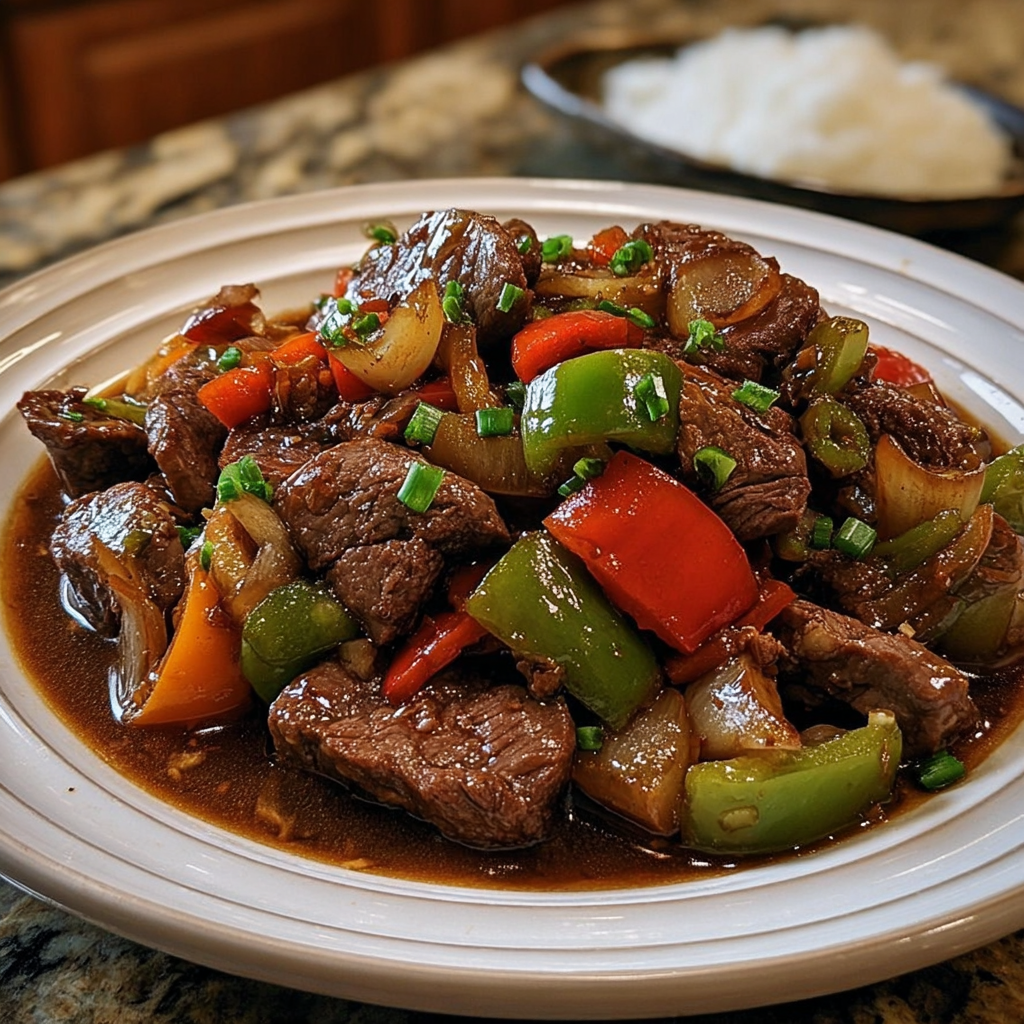
Variations of Chinese Pepper Steak
The basic Chinese pepper steak technique adapts to countless variations. Moreover, understanding these alternatives keeps the recipe fresh and exciting for regular meal rotation.
Protein Alternatives
Chicken breast works excellently as a beef substitute, requiring slightly adjusted cooking times. Moreover, chicken cooks faster than beef, so reduce cooking time accordingly. Furthermore, the same marinade and technique apply with minor modifications.
Additionally, pork tenderloin provides another delicious protein option. The tender cut requires minimal cooking time while absorbing flavors beautifully. Moreover, pork pairs exceptionally well with the traditional sauce components.
Furthermore, shrimp creates an elegant seafood version of the dish. However, shrimp requires even shorter cooking times to prevent overcooking. Plus, seafood versions often benefit from lighter sauce applications.
Vegetable Variations
Adding snow peas or snap peas introduces different textures and flavors. Moreover, these vegetables cook quickly and provide pleasant crunch. Furthermore, they add nutritional variety while maintaining the dish’s character.
Additionally, mushrooms provide umami depth and meaty texture. Shiitake or baby bella mushrooms work particularly well. Moreover, mushrooms absorb flavors beautifully while adding substance to the dish.
Furthermore, broccoli or cauliflower can replace or supplement bell peppers. These vegetables require slightly longer cooking times but provide different nutritional profiles. Plus, they offer visual and textural variety.
Sauce Modifications
Spicy variations incorporate chili garlic sauce or red pepper flakes. Moreover, adjust spice levels gradually to suit preferences. Furthermore, spicy versions pair well with cooling side dishes like cucumber salad.
Additionally, black bean sauce creates a different flavor profile while maintaining authenticity. This variation offers deeper, more complex flavors. Moreover, black bean sauce is traditional in many Chinese pepper steak recipes.
Furthermore, adding pineapple juice or fresh pineapple creates sweet and sour variations. This modification appeals to those who enjoy sweet-savory combinations. Plus, pineapple adds tropical flair to the traditional recipe.
Serving Suggestions for Chinese Pepper Steak
Proper presentation and accompaniments enhance the Chinese pepper steak experience. Moreover, thoughtful serving choices complement the dish’s flavors and textures.
Traditional Rice Accompaniments
Steamed white rice remains the classic accompaniment, providing neutral base for bold flavors. Moreover, jasmine rice offers subtle floral notes that complement the dish beautifully. Furthermore, proper rice preparation ensures fluffy, separate grains.
Additionally, brown rice provides more fiber and nutrients while offering nutty flavor. The heartier texture pairs well with the tender beef and vegetables. Moreover, brown rice supports those seeking healthier grain options.
Furthermore, fried rice transforms the meal into a complete one-dish presentation. However, avoid competing flavors that might overwhelm the pepper steak. Plus, simple fried rice with eggs and green onions works best.
Complementary Side Dishes
Hot and sour soup provides excellent contrast to the rich main dish. Moreover, the soup’s acidity helps cleanse the palate between bites. Furthermore, soup adds liquid content that balances the meal’s texture.
Additionally, steamed vegetables like bok choy or Chinese broccoli add nutritional variety. These vegetables provide different flavors and textures. Moreover, steamed preparations avoid competing with the stir-fry’s bold flavors.
Furthermore, spring rolls or pot stickers create appealing appetizer combinations. These items provide textural contrast and additional protein. Plus, they enhance the overall Chinese dining experience.
Beverage Pairings
Green tea offers traditional pairing that cleanses the palate. Moreover, tea’s slight bitterness balances the dish’s rich flavors. Furthermore, hot tea aids digestion and provides authentic cultural experience.
Additionally, light lagers or wheat beers complement the dish without overwhelming flavors. The carbonation helps cut through rich sauce while refreshing the palate. Moreover, beer’s coolness balances any spice in the dish.
Furthermore, white wines like Riesling or Gewürztraminer work well with the sweet-savory flavors. These wines provide acidity that complements the dish. Plus, their slight sweetness harmonizes with the sauce components.
Storage and Meal Prep Tips for Chinese Pepper Steak
Proper storage techniques extend the life of Chinese pepper steak while maintaining quality. Moreover, understanding preparation methods helps with meal planning and batch cooking.
Refrigeration Guidelines
Store leftover Chinese pepper steak in airtight containers for up to three days. Moreover, separate any rice to prevent moisture absorption that can make rice mushy. Furthermore, glass containers preserve flavors better than plastic alternatives.
Additionally, cool the dish quickly by spreading it in shallow containers. This prevents bacterial growth while preserving texture. Moreover, avoid leaving the dish at room temperature for extended periods.
Furthermore, reheat thoroughly to 165°F internal temperature for food safety. Use stovetop or microwave methods, adding small amounts of liquid if needed. Plus, avoid reheating multiple times, which can overcook ingredients.
Freezing Options
Chinese pepper steak freezes reasonably well for up to three months. Moreover, the sauce and vegetables maintain quality better than the meat. Furthermore, proper packaging prevents freezer burn and flavor loss.
Additionally, portion into meal-sized containers for convenient reheating. Label with contents and date for proper rotation. Moreover, thaw overnight in refrigerator for best results.
Furthermore, expect some texture changes in frozen and reheated versions. The vegetables may be slightly softer, and the sauce might separate slightly. Plus, fresh garnishes help restore visual appeal.
Meal Prep Strategies
Prepare marinade and slice meat up to one day ahead. Moreover, store components separately until ready to cook. Furthermore, having ingredients prepped makes quick weeknight cooking possible.
Additionally, pre-cut vegetables store well for 2-3 days in refrigerator. Keep different vegetables in separate containers to prevent moisture transfer. Moreover, proper storage maintains crispness and color.
Furthermore, cook double batches when time permits. The dish reheats well and saves time during busy periods. Plus, having homemade versions available reduces takeout temptation.
Equipment Essentials for Chinese Pepper Steak
Having proper equipment makes creating Chinese pepper steak easier and more successful. Moreover, the right tools ensure consistent results and safer cooking experiences.
Wok vs. Skillet Considerations
Traditional woks provide optimal heat distribution and capacity for stir-frying. Moreover, the sloped sides allow for easy tossing and stirring motions. Furthermore, carbon steel woks develop seasoning that enhances flavors over time.
Additionally, large skillets work well for home cooking when woks aren’t available. Choose heavy-bottomed pans that distribute heat evenly. Moreover, ensure adequate size to prevent overcrowding during cooking.
Furthermore, non-stick surfaces can work but may not achieve the same browning. Stainless steel or cast iron provides better heat retention. Plus, these materials allow for proper searing and browning.
Knife Skills and Preparation Tools
Sharp knives are essential for proper meat and vegetable preparation. Moreover, dull knives make uniform slicing difficult and dangerous. Furthermore, consistent cuts ensure even cooking and professional appearance.
Additionally, cutting boards should be large enough for efficient prep work. Separate boards for raw meat and vegetables prevent cross-contamination. Moreover, non-slip surfaces provide safety during preparation.
Furthermore, having multiple bowls for ingredient organization streamlines cooking. Prep all components before starting to cook. Plus, mise en place approach ensures smooth execution.
Cultural Background of Chinese Pepper Steak
Understanding the cultural origins of Chinese pepper steak enhances appreciation for this beloved dish. Moreover, the recipe represents the evolution of Chinese-American cuisine over decades.
Historical Development
Chinese pepper steak evolved from traditional Chinese cooking techniques adapted for American ingredients. Moreover, Chinese immigrants modified recipes to use locally available ingredients. Furthermore, the dish reflects cultural adaptation and culinary creativity.
Additionally, the popularity of Chinese-American cuisine grew throughout the 20th century. Restaurants developed dishes that appealed to American tastes while maintaining authentic techniques. Moreover, pepper steak became a gateway dish for many Americans exploring Chinese flavors.
Furthermore, the dish represents successful cultural fusion that respects both traditions. It maintains essential Chinese cooking principles while incorporating Western preferences. Plus, this adaptation has made Chinese flavors accessible to broader audiences.
Regional Variations
Different regions of America developed unique interpretations of Chinese pepper steak. Moreover, local ingredients and preferences influenced recipe variations. Furthermore, these regional differences reflect diverse cultural influences.
Additionally, restaurant chains standardized certain versions while home cooks created personal adaptations. This dual development created both commercial and traditional versions. Moreover, both styles have merit and devoted followings.
Furthermore, modern interpretations continue evolving with changing tastes and dietary needs. Health-conscious versions reduce sodium and oil while maintaining flavor. Plus, fusion approaches incorporate influences from other cuisines.
FAQs About Chinese Pepper Steak
What makes Chinese pepper steak different from regular pepper steak?
Chinese pepper steak uses specific marinade ingredients and stir-fry techniques that create distinctive flavors. Moreover, the combination of soy sauce, oyster sauce, and hoisin sauce provides authentic Chinese taste. Furthermore, the high-heat cooking method and cornstarch coating create unique textures.
Additionally, traditional pepper steak often uses different seasonings and cooking methods. Chinese versions emphasize umami flavors and proper meat preparation. Plus, the sauce consistency and ingredient balance follow Chinese culinary principles.
Can I make Chinese pepper steak without a wok?
While woks provide optimal results, large skillets work well for home cooking. Moreover, the key is using high heat and proper technique rather than specific equipment. Furthermore, heavy-bottomed pans distribute heat evenly and prevent hot spots.
Additionally, ensure your cooking surface is large enough to avoid overcrowding. Cook in batches if necessary to maintain proper temperatures. Plus, carbon steel or cast iron pans provide excellent heat retention.
How do I slice flank steak properly for Chinese pepper steak?
Slice flank steak against the grain into strips about ¼-inch thick. Moreover, cutting against the grain breaks tough muscle fibers for tender results. Furthermore, uniform thickness ensures even cooking and professional appearance.
Additionally, use sharp knives for clean cuts that don’t tear the meat. Place the steak in the freezer for 15-20 minutes to firm it up for easier slicing. Plus, consistent technique improves both texture and presentation.
What can I substitute for oyster sauce in Chinese pepper steak?
Fish sauce mixed with a little sugar provides similar umami depth. Moreover, mushroom sauce offers vegetarian alternative with comparable savory qualities. Furthermore, additional soy sauce with a touch of sugar can work in emergencies.
Additionally, consider that substitutions will change the flavor profile slightly. Oyster sauce provides unique sweetness and richness. Plus, authentic results require traditional ingredients when possible.
How can I make my Chinese pepper steak less salty?
Reduce the amount of soy sauce in the marinade and avoid adding extra salt. Moreover, rinse the meat briefly after marinating to remove excess sodium. Furthermore, increase the proportion of vegetables to dilute overall saltiness.
Additionally, use low-sodium soy sauce and other reduced-sodium condiments. Balance with additional acid like rice vinegar or citrus juice. Plus, serving with plain rice helps absorb excess salt.
Why is my Chinese pepper steak tough?
Tough meat usually results from overcooking or cutting with the grain. Moreover, flank steak becomes increasingly tough with extended cooking. Furthermore, proper marinating time and technique are essential for tenderness.
Additionally, ensure your cooking temperature is high enough for proper searing. Low heat creates steamed rather than stir-fried results. Plus, don’t stir too frequently during the initial searing phase.
Conclusion: Mastering the Art of Chinese Pepper Steak
Chinese pepper steak represents the perfect introduction to authentic Chinese cooking techniques. Moreover, this versatile dish combines accessible ingredients with professional methods that deliver restaurant-quality results. Furthermore, mastering this recipe provides a foundation for exploring countless stir-fry variations.
The key to success lies in understanding proper preparation, heat control, and timing. Additionally, quality ingredients and traditional techniques elevate simple components into extraordinary meals. The dish’s adaptability makes it suitable for various dietary preferences and skill levels.


